Angular is an open source JavaScript framework for building web applications. It was developed by Google and released in 2017. Some key features include being cross-platform for mobile and desktop, high performance, and productivity. The document outlines how to set up a development environment with Node.js and npm, create a new Angular project using the Angular CLI, and describes the basic structure of an Angular project including components, TypeScript, and data binding.
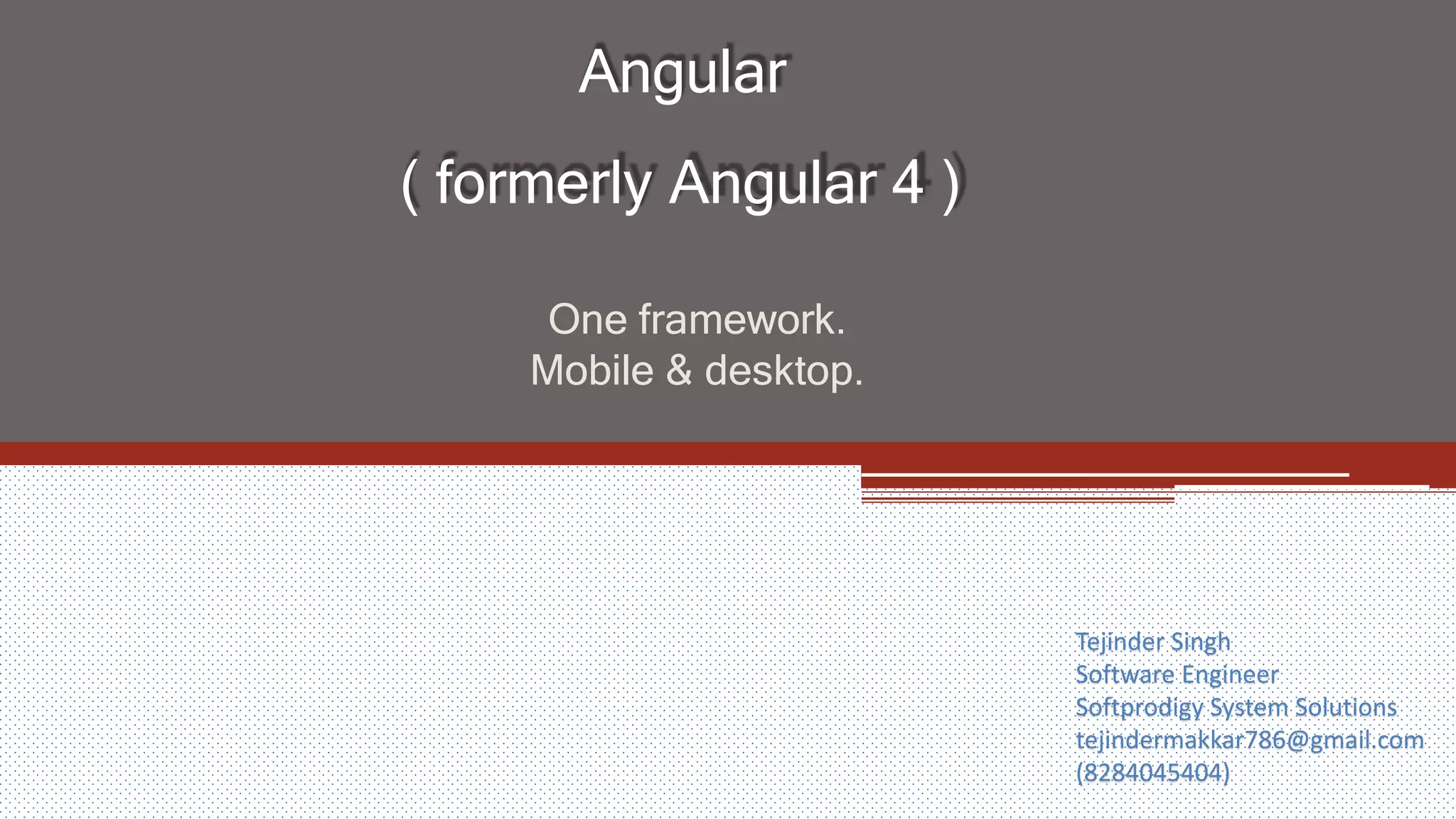
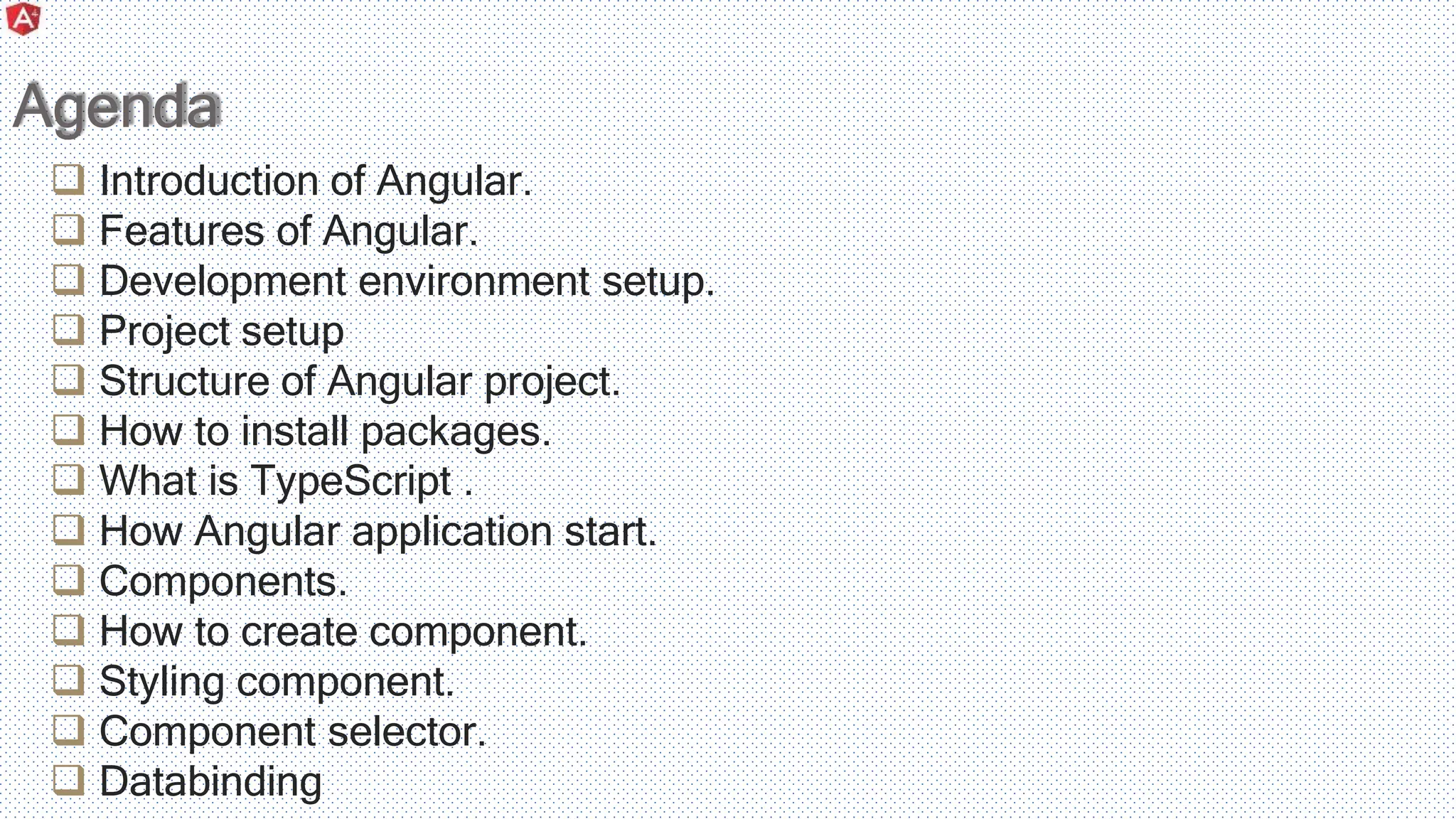
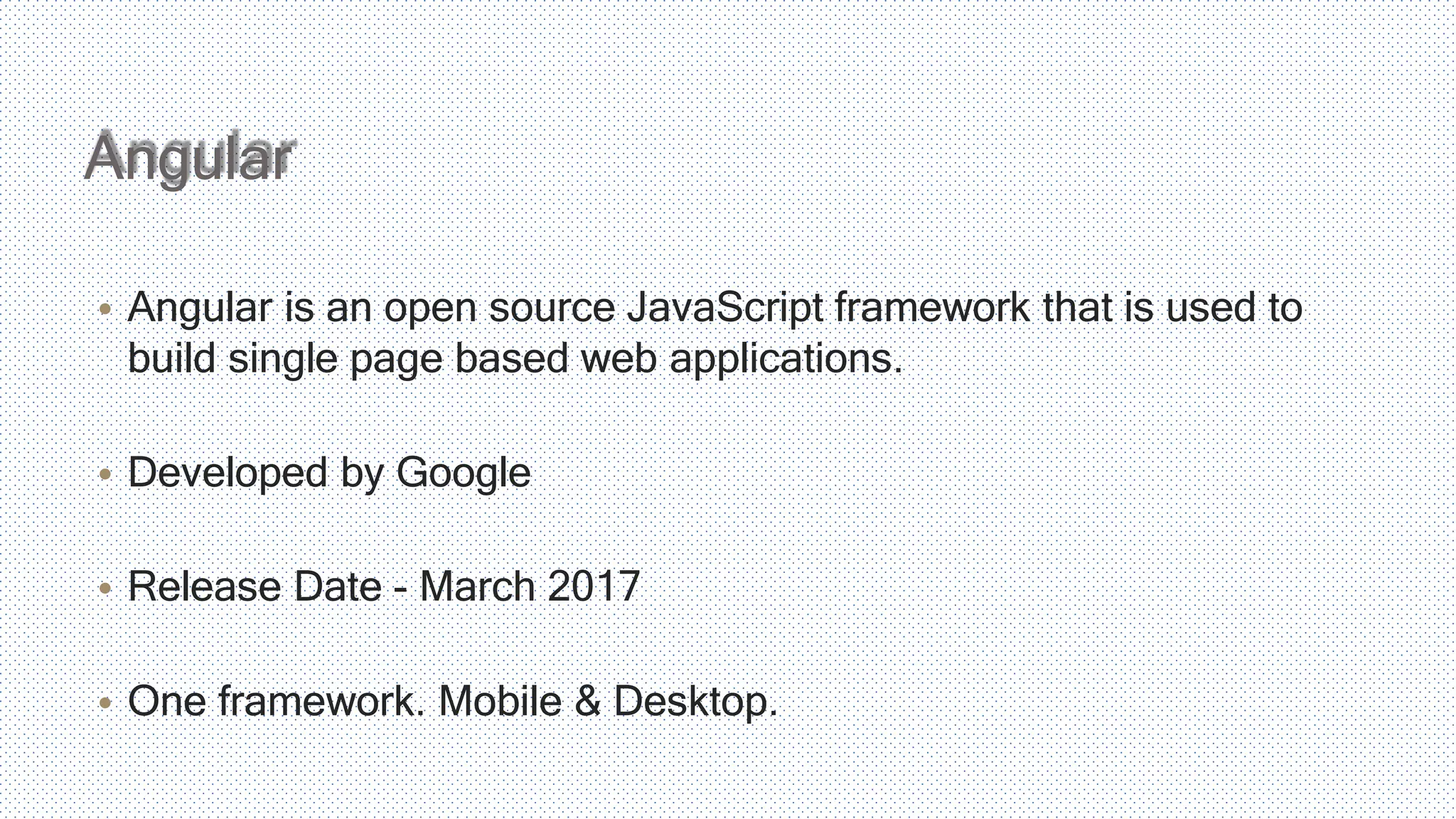

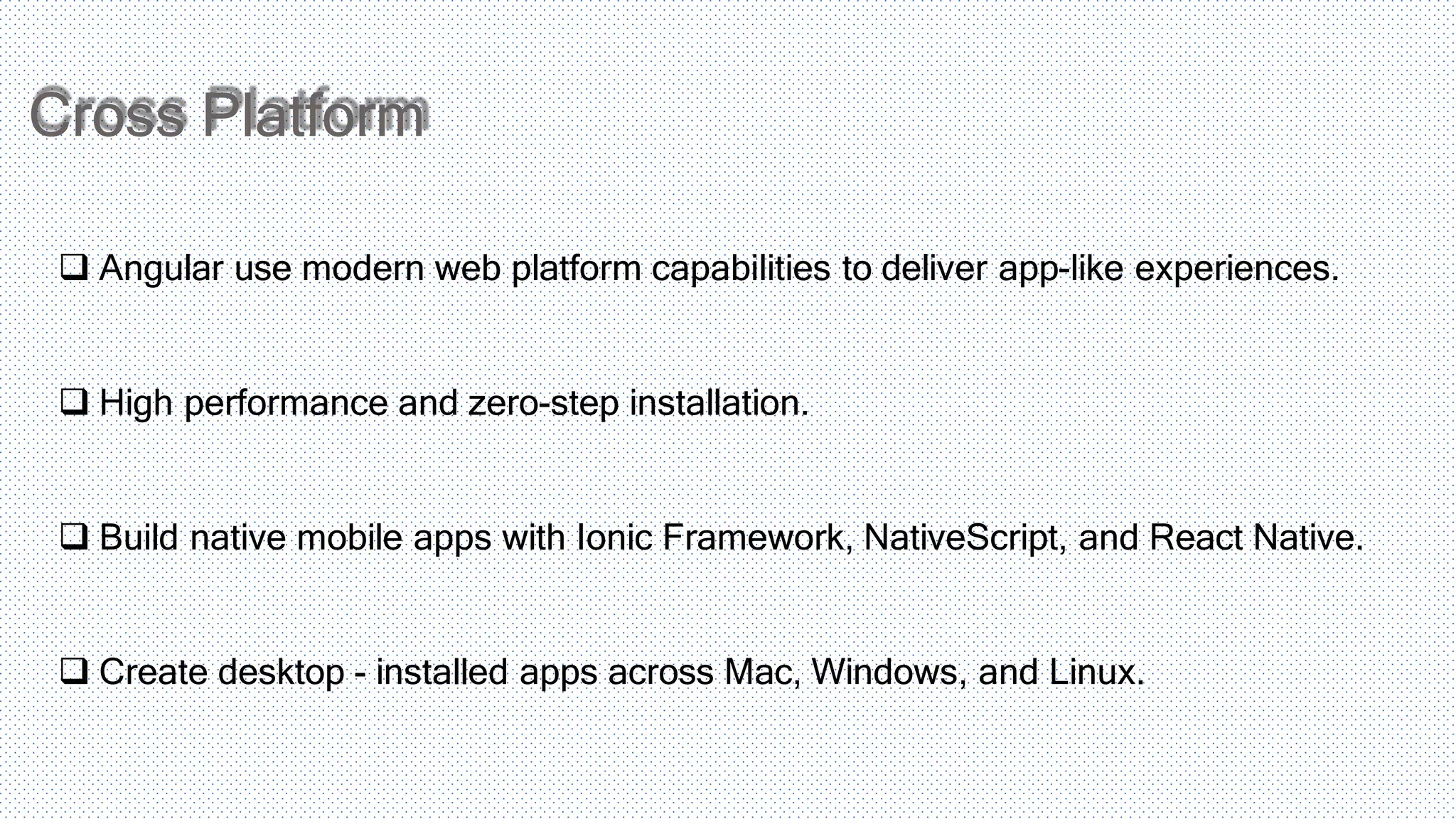

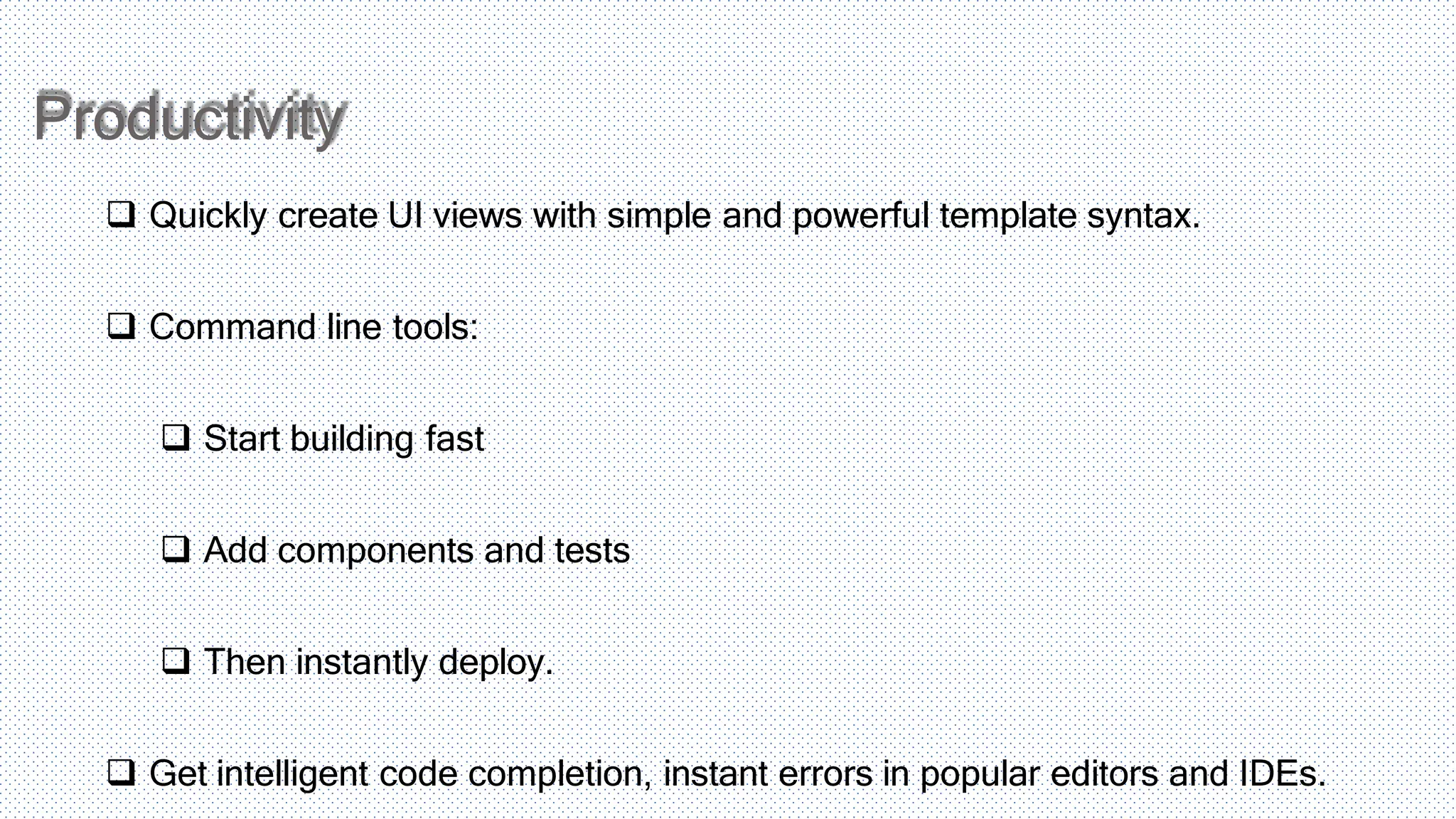

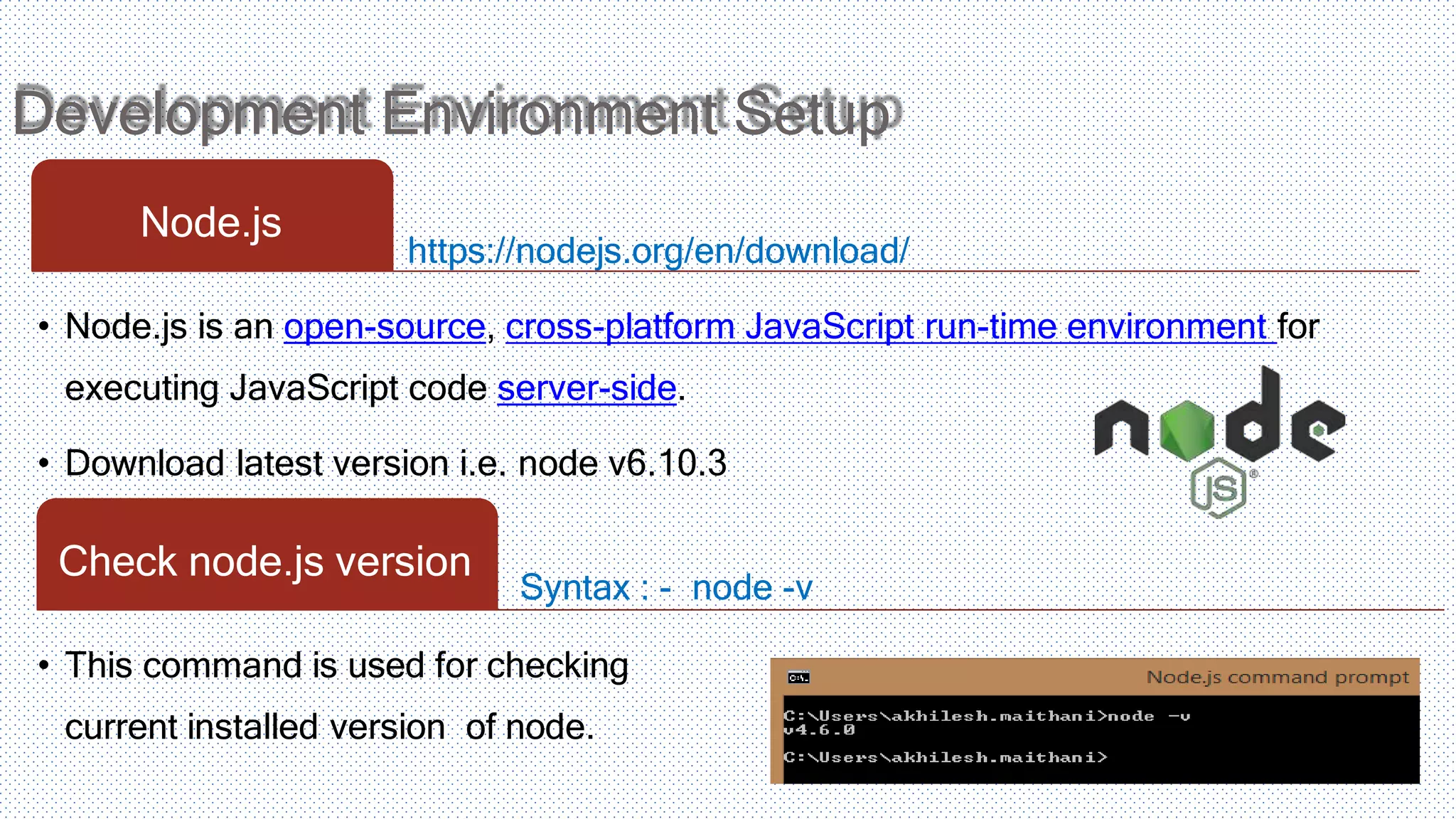
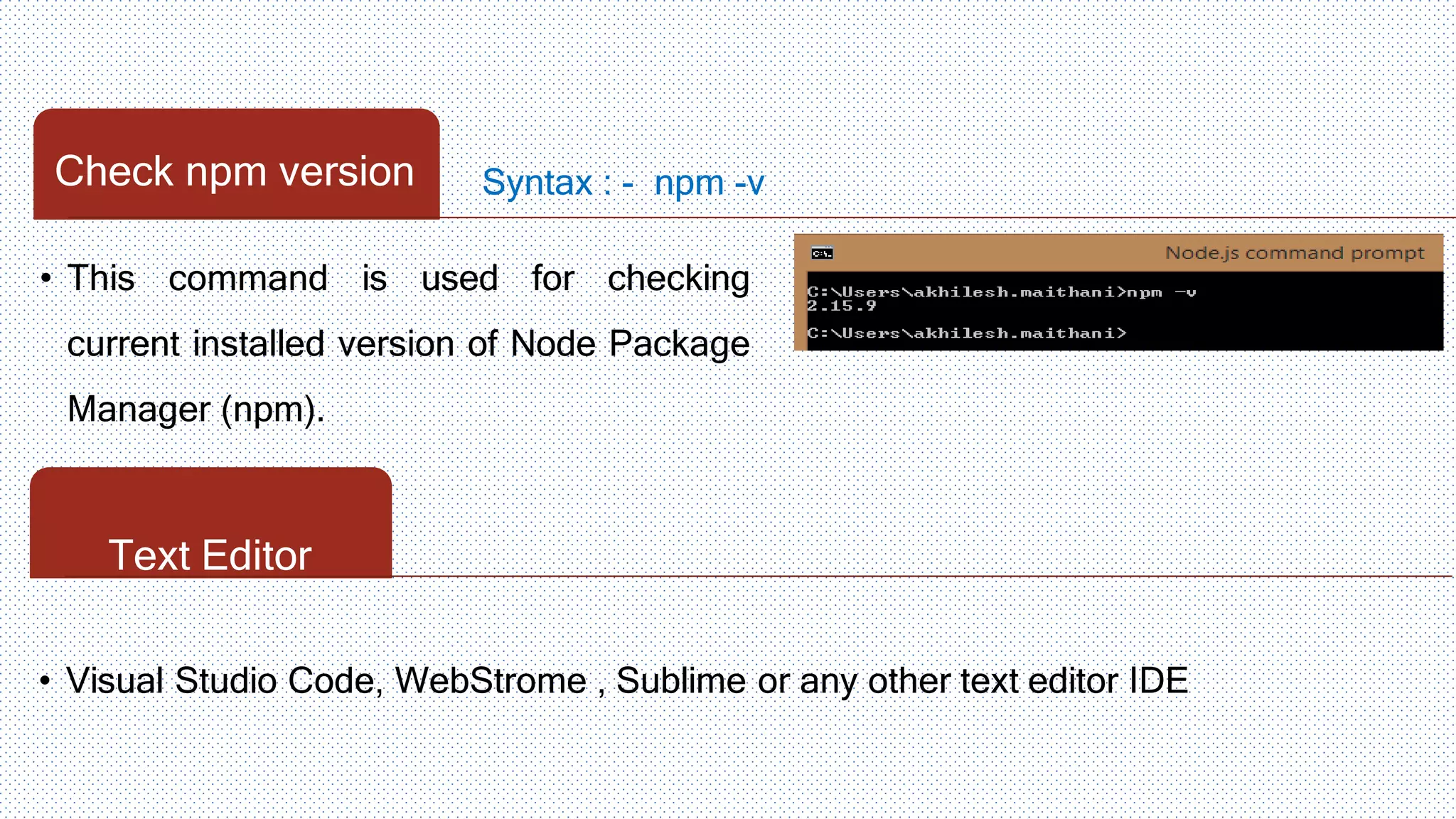
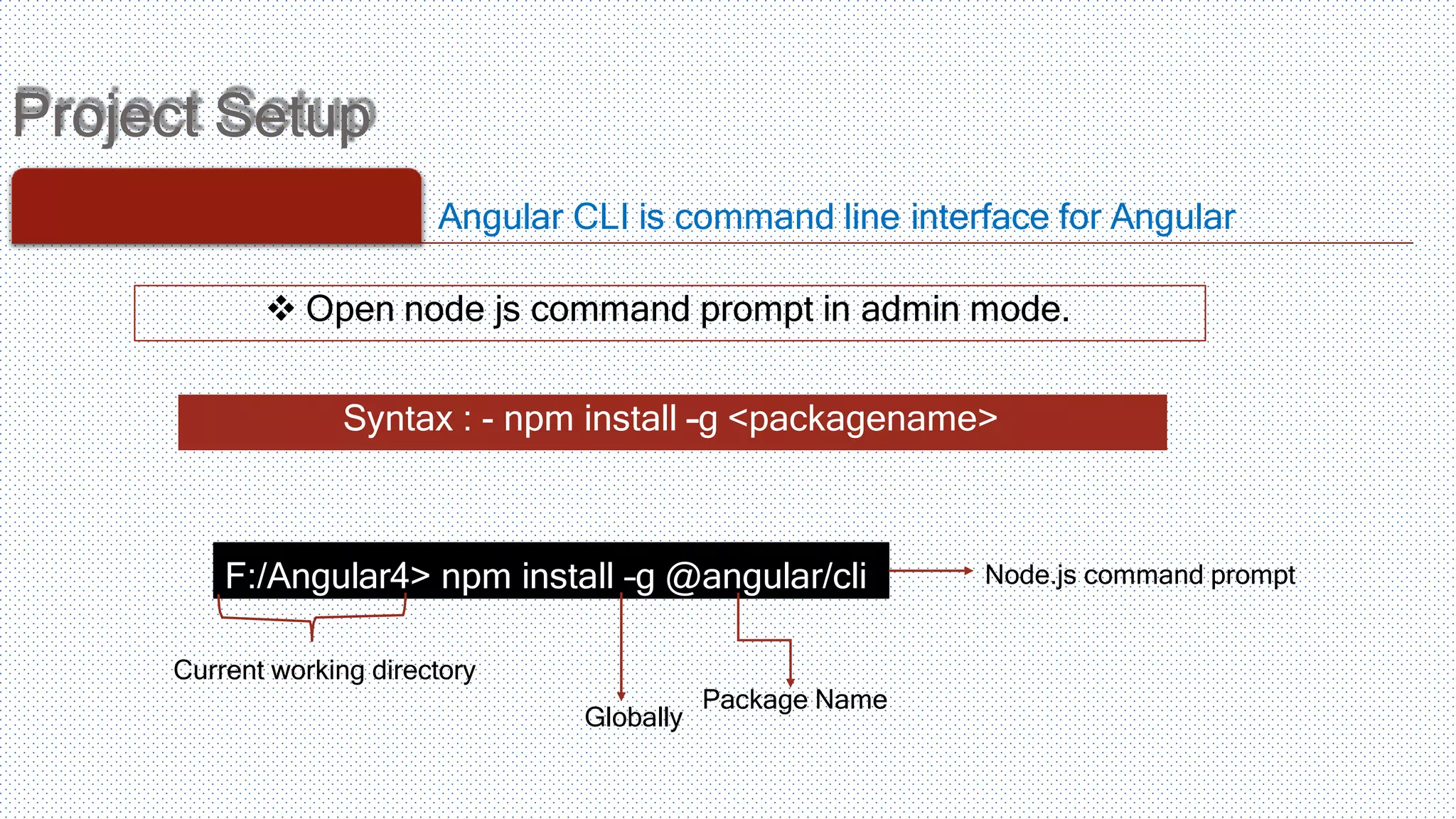
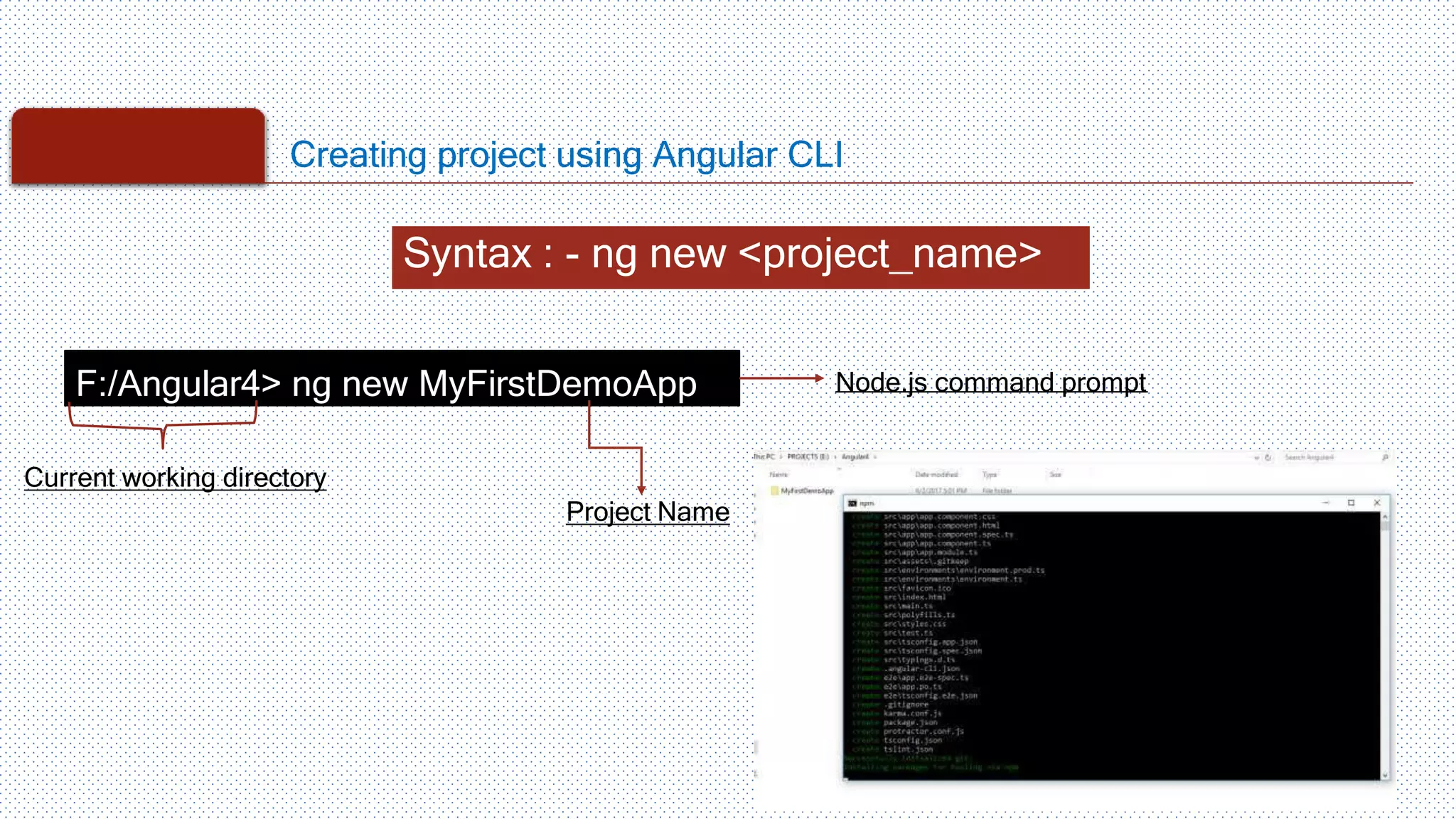
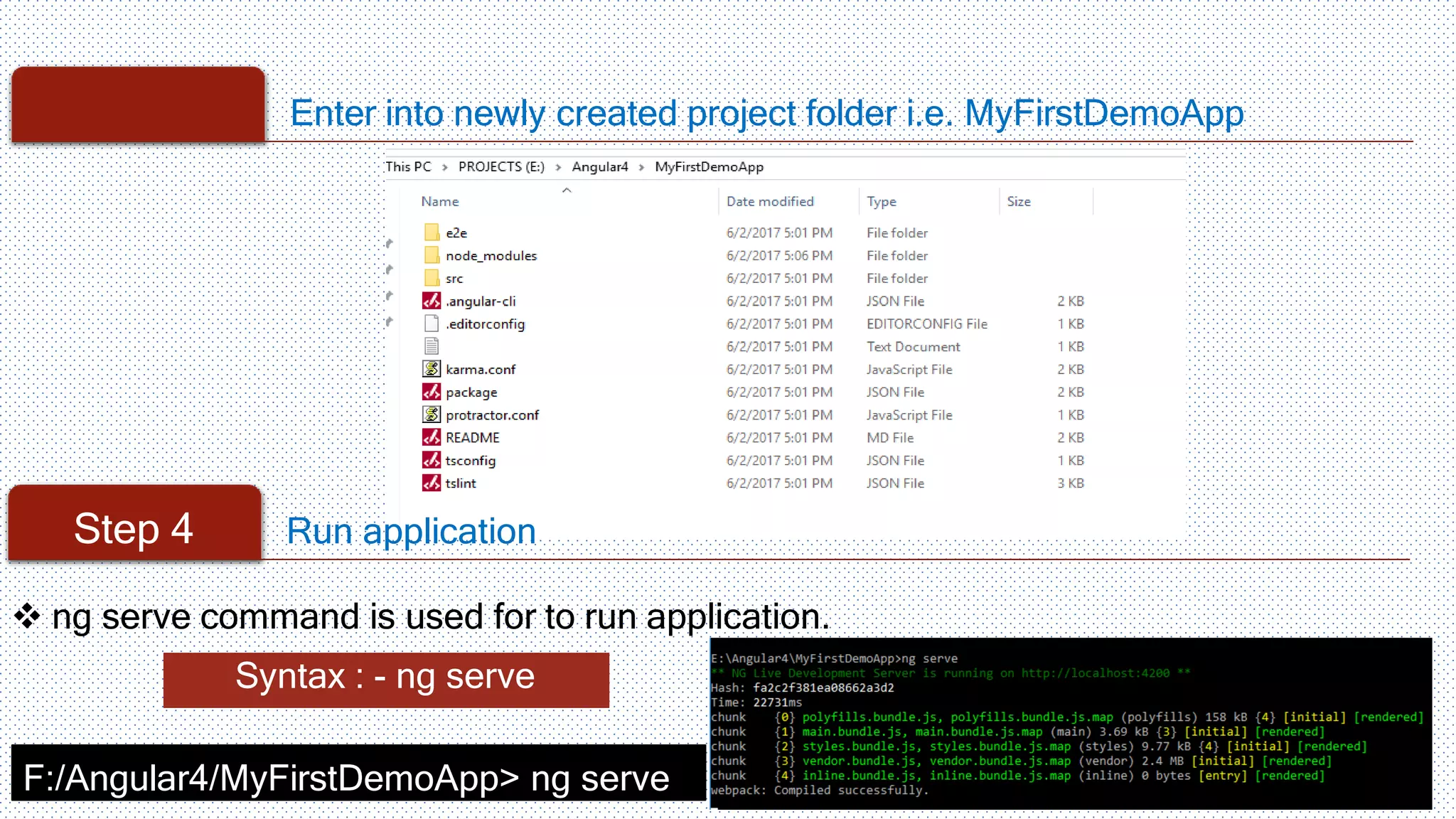

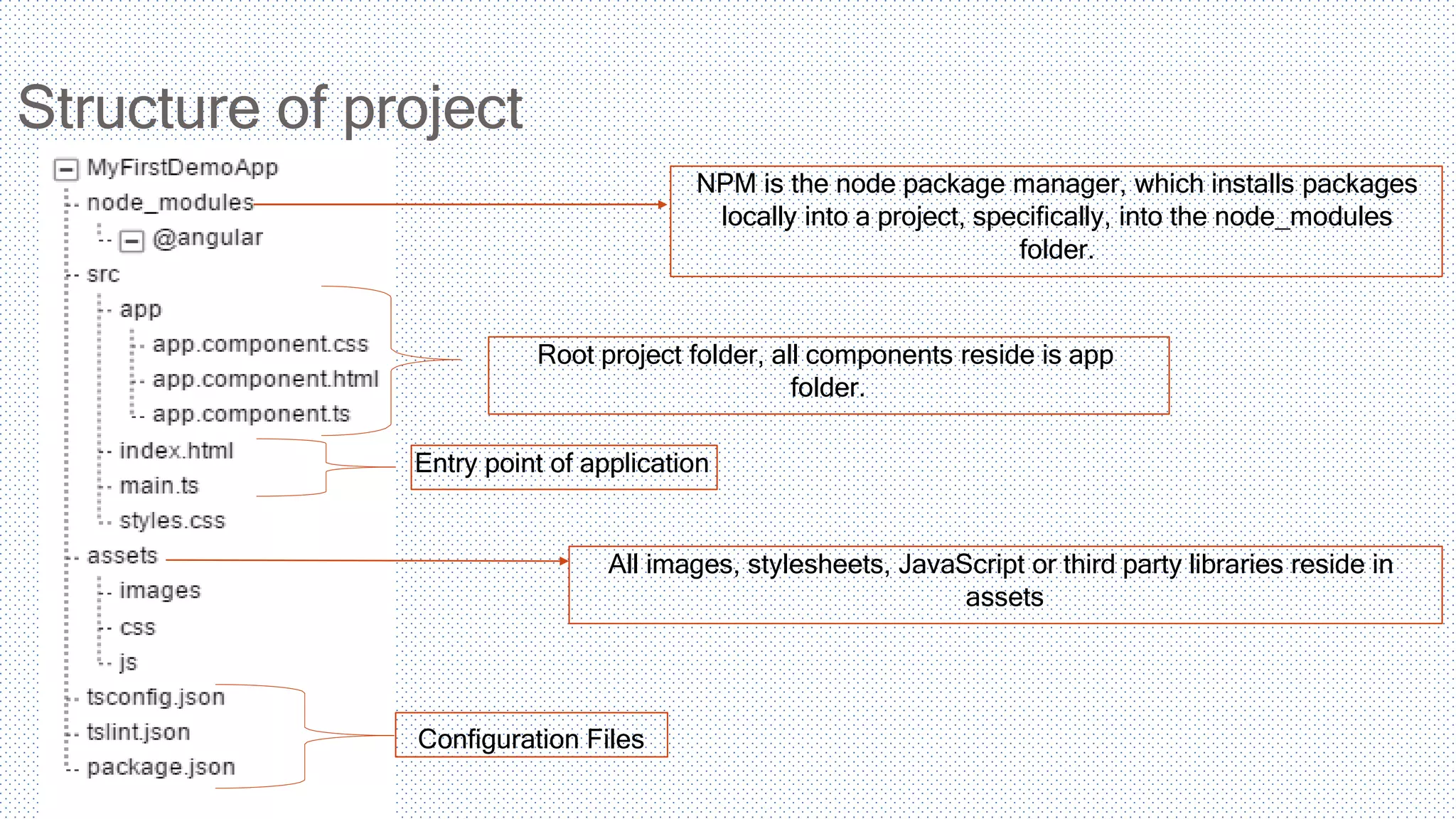
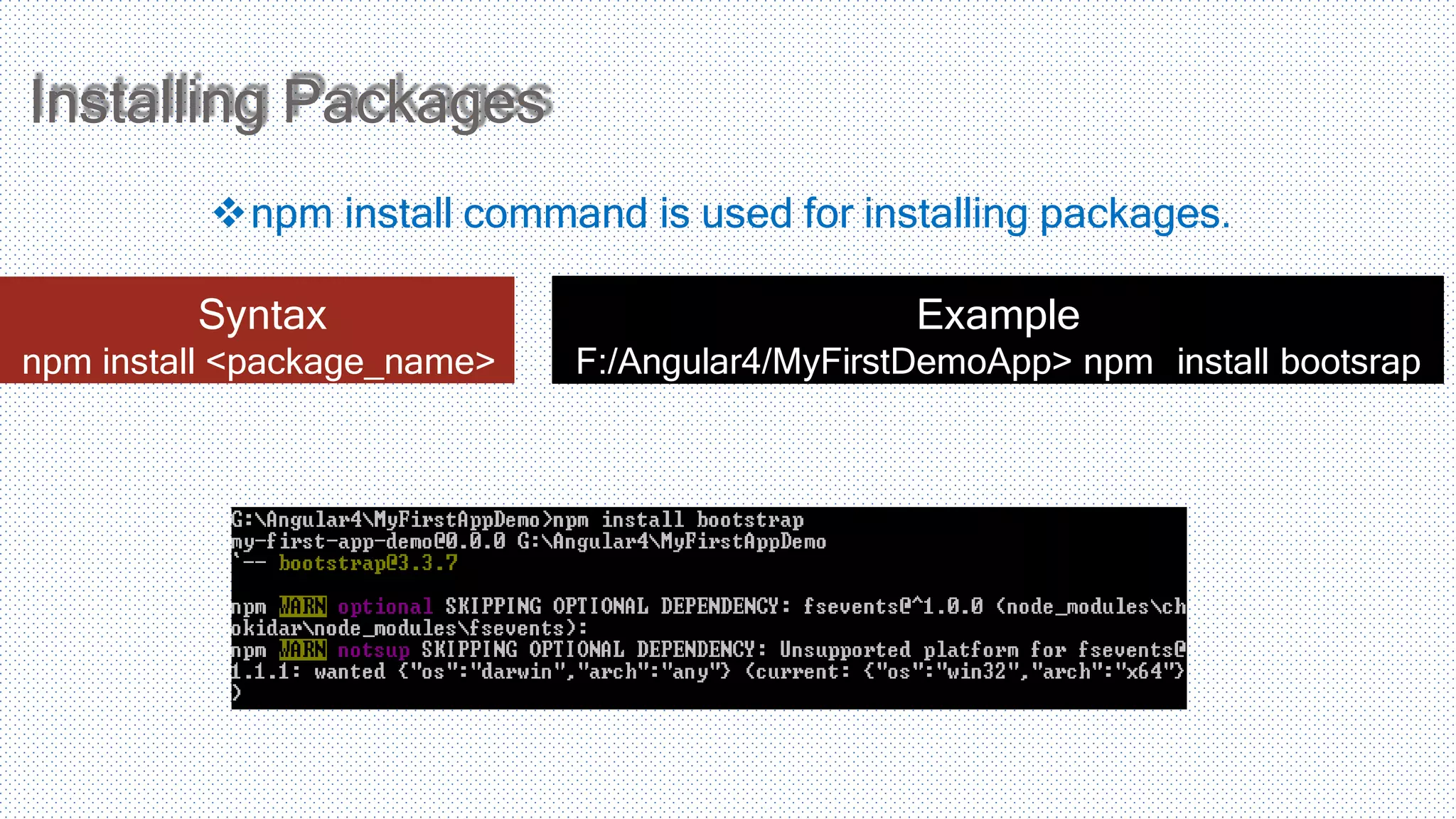
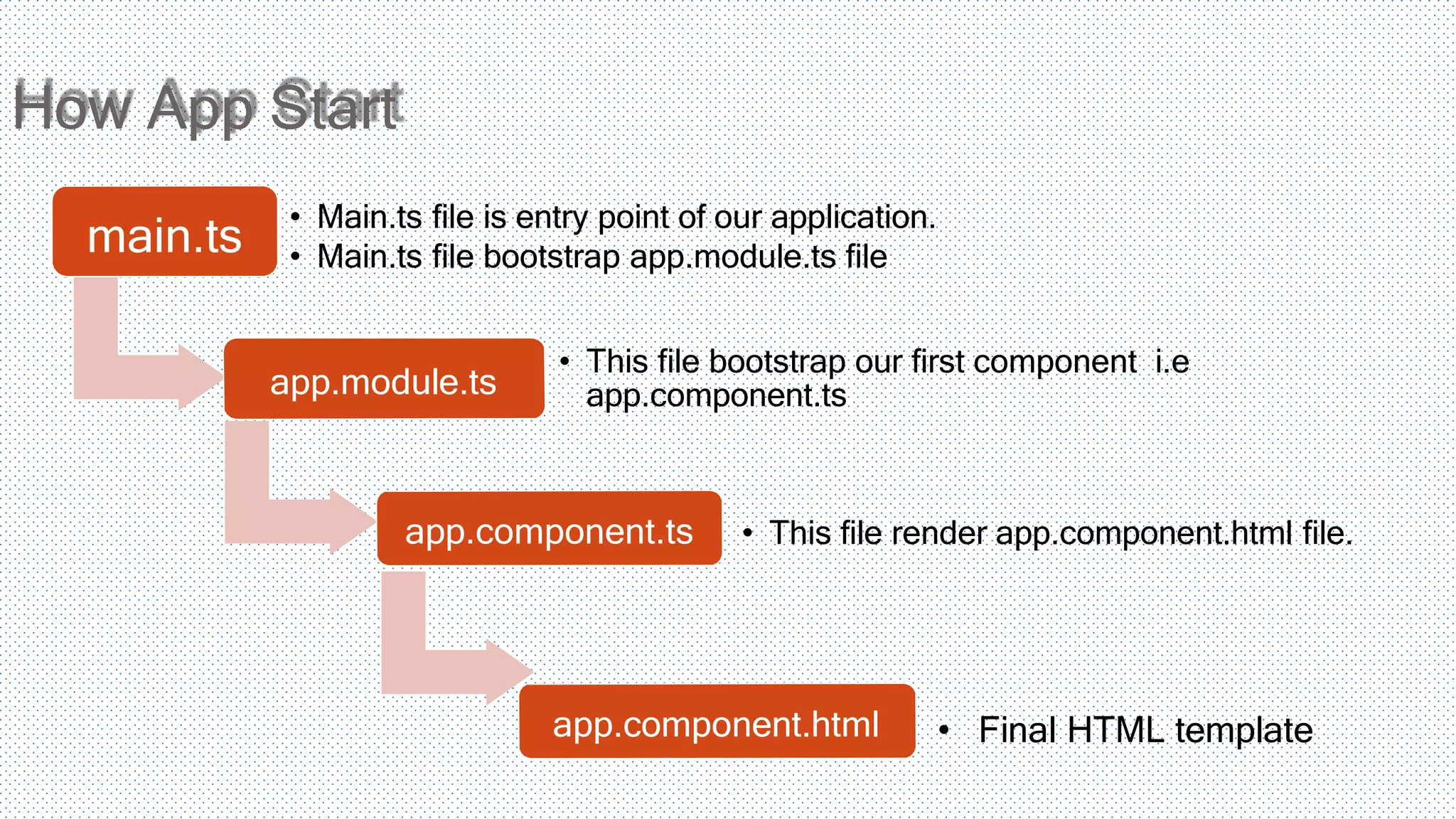

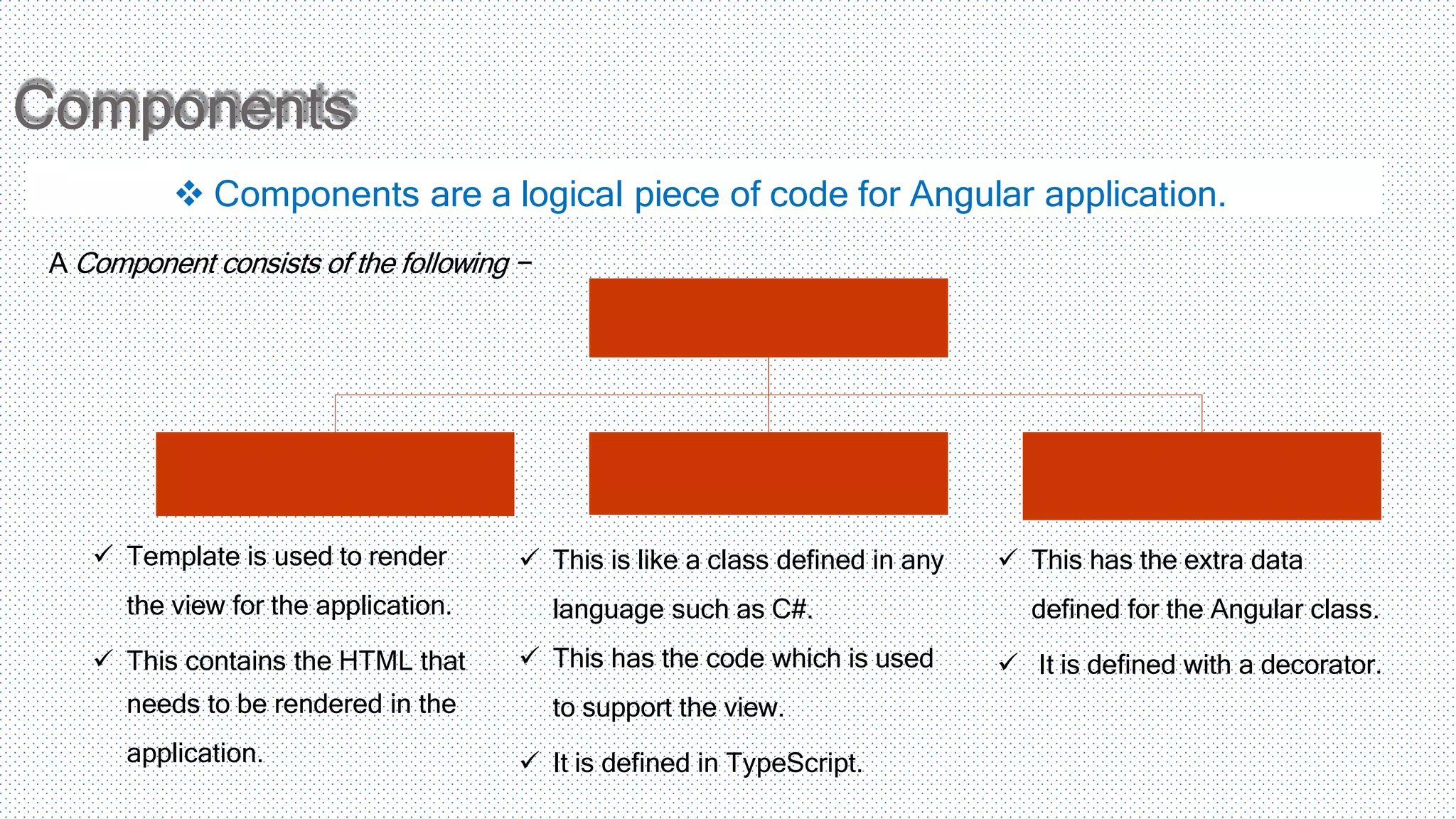
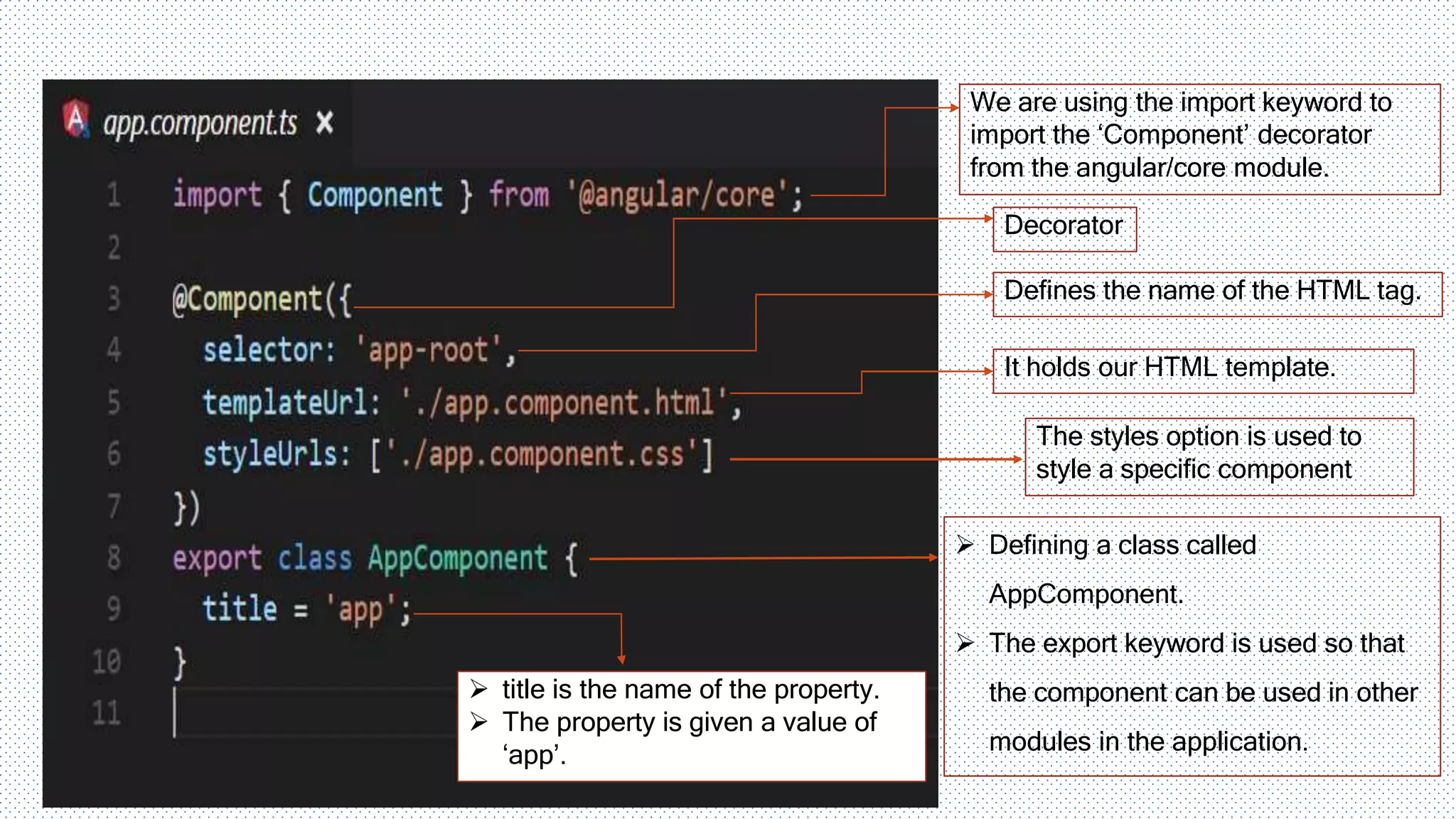
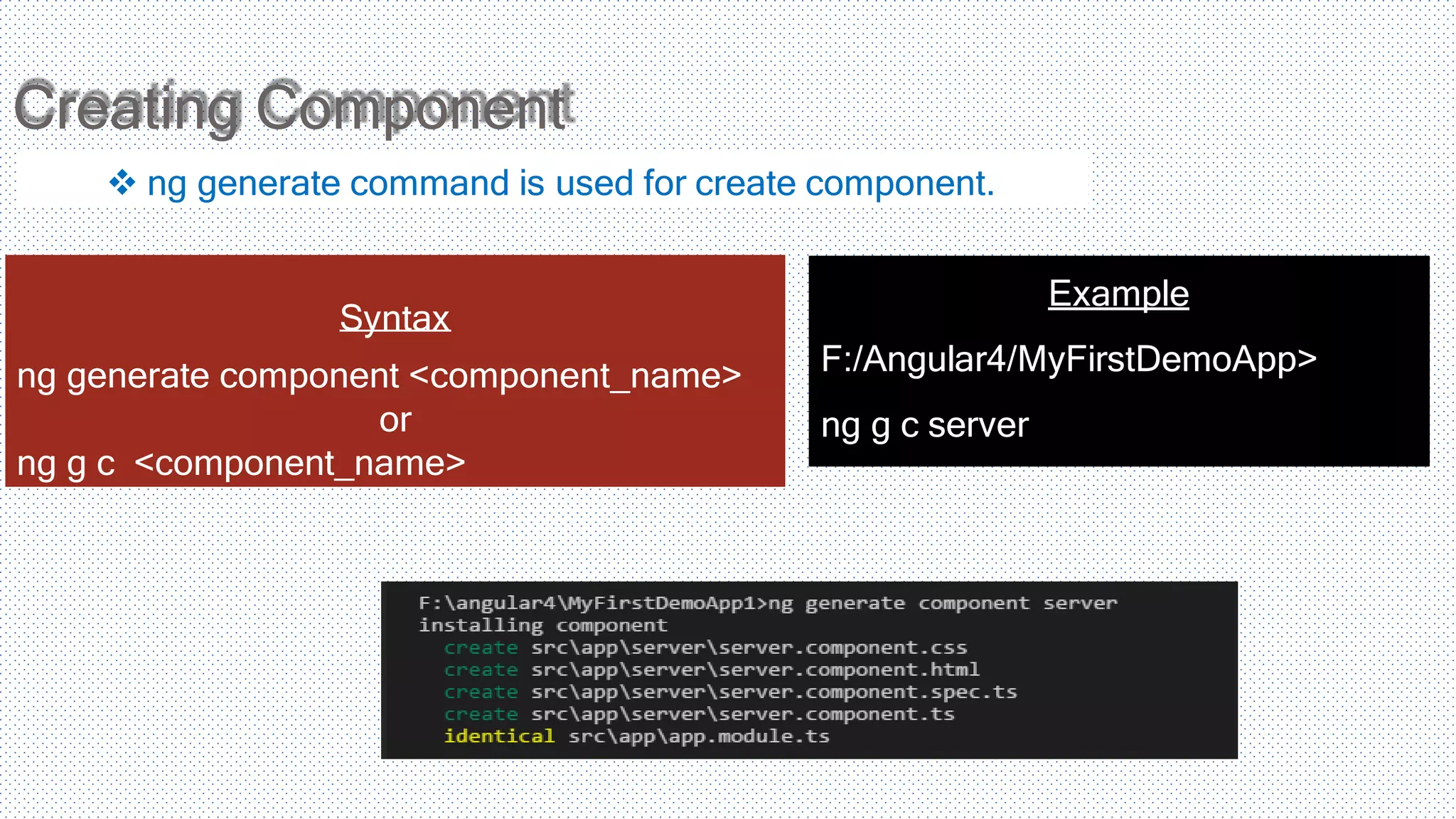
![Data binding Data binding is communication between business logic and views. Typescript Code (Business Logic) Template (HTML) Data binding = Communication Output Data String Interpolation => {{ data }} Property Binding => [property] = “ data “](https://image.slidesharecdn.com/angular4-170629062540-180321181950/75/Angular4-getting-started-22-2048.jpg)
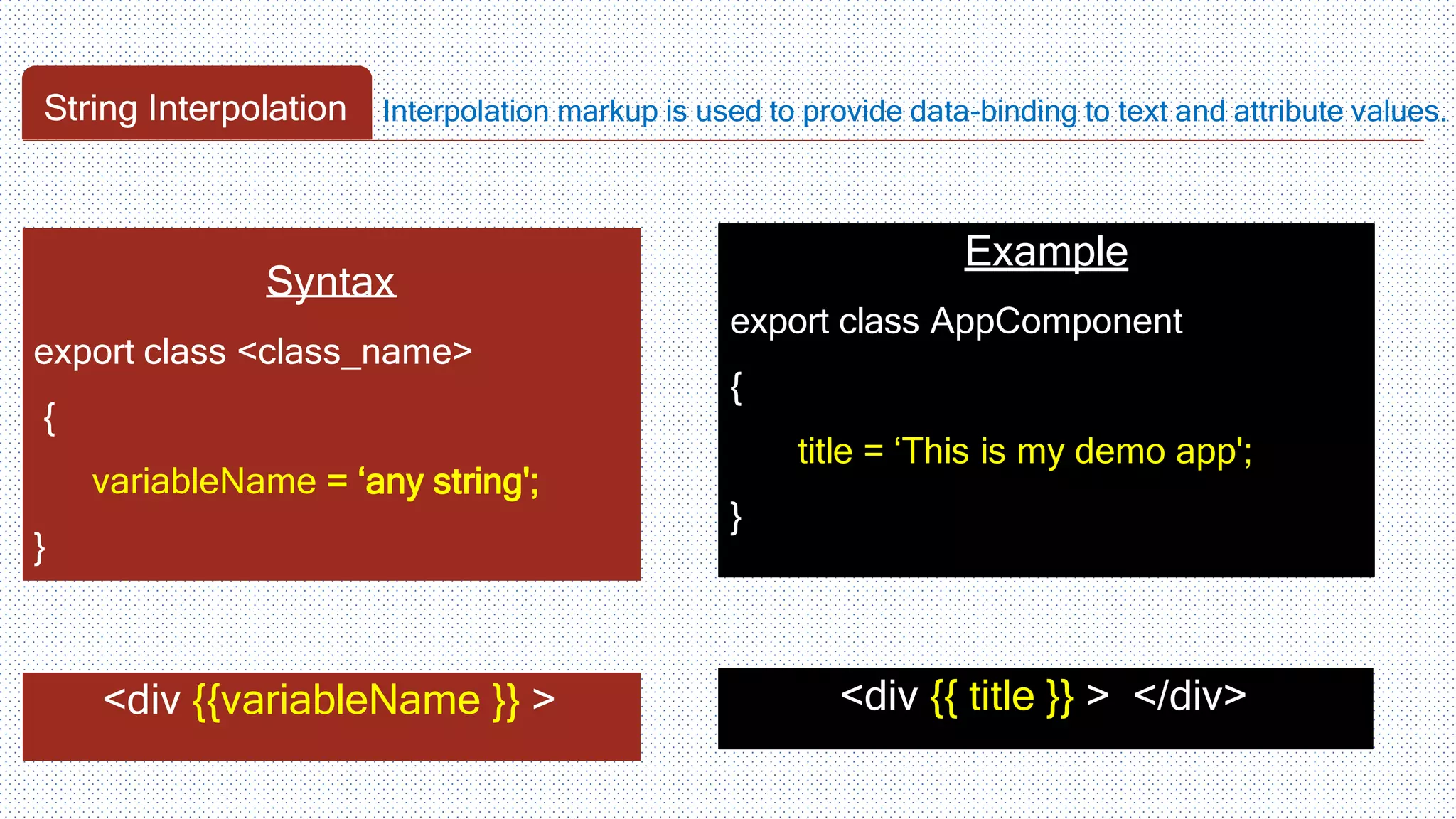
![Property Binding HTML <button [disabled]="!isActive" class="btn">ADD</button> Typescript export class ClientComponent { isActive = false; constructor() { setTimeout(() => { this.isActive = true; }, 2000); } ngOnInit() { } Property binding allow us to bind values to properties of an element to modify their behavior or appearance. This can include properties such as class, disabled, href or textContent.](https://image.slidesharecdn.com/angular4-170629062540-180321181950/75/Angular4-getting-started-24-2048.jpg)
